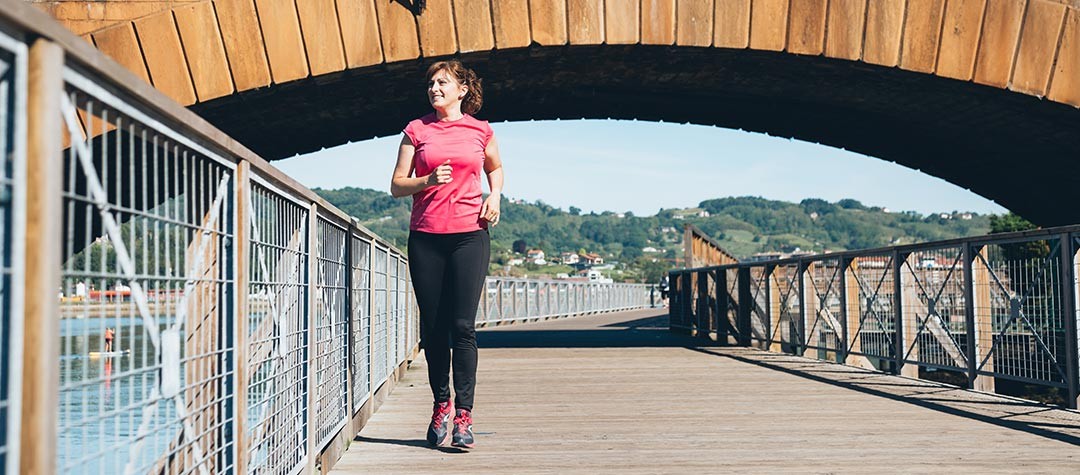Perhaps it’s a lycra driven mid-life crisis or a last ditch attempt to shift those stubborn few pounds, if you’ve not discovered running until middle age then don’t despair, it’s never too late to lace up your trainers!
1. Start slowly!
If you’re a complete beginner then the key is to start slowly and build up gradually. Remember, Rome wasn’t built in a day! Too much too soon will more than likely result in injury and frustration.
It’s best to start with blocks of jogging interspersed with blocks of walking. As the weeks go by you should aim to gradually increase the length of the jogging segments and reduce the length of the walking segments with the aim of being able to build up to completing a continuous run.
If you’re starting from scratch you should give yourself at least 6 weeks of jogging/walking 2-3 times per week to get used to your new routine and to see improvements in your fitness.
2. Build strength
As a middle aged runner you may be a little more susceptible to aches, pains and injuries. Your body needs to be robust enough to withstand the demands of impact so a small amount of strength and conditioning work can go a long way.
As you slowly build up your running you should also aim to strengthen the key muscle groups involved - quads, hamstrings, glutes and calves. Yoga or pilates are also great ways to help improve your core strength and to counterbalance any muscle tension that running creates.
3. Incorporate cross training
As you age your body’s collagen starts to degrade and as a result your tendons become stiffer and therefore less able to tolerate stress. However low impact activities such as cycling, swimming and aqua jogging can be used to supplement your running and can reduce your risk of sustaining an overuse injury, strengthen alternative muscle groups that are not predominantly used when running, whilst also improving your aerobic fitness.
4. Work on your flexibility
It’s also really important to work on your flexibility as a middle aged runner. As you become older the elasticity of your soft tissues decreases and joint motion becomes more restricted, meaning your flexibility is reduced. This can be further impacted if you have a sedentary job and spend most of your day sitting behind a desk.
Try to include some dynamic flexibility work such as lunges and leg swings before each run to help increase your range of motion. After each run spending just a few minutes stretching the major muscle groups can really help to gently lengthen the muscles, ligaments and tendons again, keeping you on the road and injury free.
5. Listen to your body
Whether you’re following a structured training programme or are simply ‘free styling’ it’s crucial to listen to your body. Remember that a training plan simply tells you what training to do on a particular day, it doesn’t account for how you are feeling.
Try to listen to what your body is telling you and don’t be afraid to adapt your training when necessary. If you are feeling tired or have a niggle then schedule some extra rest days before your next run.
6. New shoes
Finally, whatever your age, it is undoubtedly wise to invest in a pair of proper running shoes that provide good support and cushioning when you start running. Don’t expect that the battered pair that you used to play badminton in at school will suffice!
It’s best to go to a specialist running shop to make your first purchase as the type of shoe that you require will depend on your biomechanics. A good specialist running shop should be able to advise you further. Remember that your feet will expand slightly as you run so you’ll need to accommodate this when considering sizing.














